Retroculus lapidifer
SynonymsTop ↑
Chromys lapidifera Castelnau 1855; Retroculus boulengeri Eigenmann & Bray 1894
Etymology
Retroculus: from the Latin retro, meaning ‘back, behind’, and oculus, meaning ‘eye’, in reference to the position of the eye in the posterior portion of the head.
lapidifer: from the Latinate prefix lapid-, derived from the Ancient Greek λῐ́θος (líthos), meaning ‘stone’, and -ifer, from the Ancient Greek φέρω (phérō), meaning ‘bearing, carrying’. Presumably in reference to this species’ breeding behaviour.
Classification
Order: Perciformes Family: Cichlidae
Distribution
Inhabits rivers draining into the Atlantic Ocean in the northeast of the country, south of the Amazon. The majority of records pertain to the rio Tocantins system, its major tributary the rio Araguaia, and affluents within both these basins including the rios das Mortes, do Coco, Itacaiúnas, Paraupebas, Maranhão, and Santa Teresa.
It also occurs in the rio Capim within the rio Guamá watershed and the rio Gurupi, a smaller coastal drainage.
Type locality is ‘Falls of the Rio Araguaya, Brazil’.
Habitat
This species is rheophilic and occurs in rapids or fast-flowing stretches of clear water rivers. Such habitats typically contain many boulders of varying sizes, and still pools with substrates of sand or gravel in marginal zones.
Maximum Standard Length
150 – 200 mm.
Aquarium SizeTop ↑
An aquarium with a base measuring at least 210 ∗ 60 cm or equivalent is required.
Maintenance
Retroculus spp. are unsuitable for the standard community aquarium, and should be maintained in a set-up designed to resemble a flowing river. The substrate should be composed of soft sand mixed with small pebbles if the aim is to breed the fish (see ‘Reproduction’). Rocks, boulders, roots, branches, and aquatic plants can also be added, although the latter should be hardy species which can be grown attached to items of décor.
These cichlids are intolerant of organic waste, and require spotless water in order to thrive. High levels of dissolved oxygen and water movement are also recommended, meaning additional powerheads, pumps, etc., should be employed as necessary. A linear flow pump would also be a useful addition, while weekly water changes of 30-70% should be considered mandatory.
Wild examples can be delicate and sensitive to white spot/ich post-import, so a lengthy quarantine period may be required.
Water Conditions
Temperature: 26 – 32 °C; this species will not thrive in cooler water.
pH: 6.0 – 8.0
Hardness: 18 – 215 ppm
Diet
The diet of wild individuals is dominated by benthic aquatic invertebrates, particularly chironomid (midge), trichoptera (caddisfly), and ephemeroptera (Mayfly) larvae.
In the aquarium offer high quality, fine-grade prepared foods plus live or frozen chironomid larvae (bloodworm), Tubifex, Artemia, Gammarus, mosquito larvae, small earthworms, etc. At least some of the dried products should contain a high proportion of vegetable matter such as Spirulina or similar. Both home-made and proprietary gelatine-based foods are also proven to work well. For the best growth rate and condition offer 3-5 small meals per day rather than a single large portion.
Retroculus spp. are primarily benthivorous, but also feed readily on items suspended in the water flow, small fishes, etc., in addition to sifting mouthfuls of substrate through the gills to extract edible items.
Behaviour and CompatibilityTop ↑
Relatively peaceful unless breeding but may predate on smaller tankmates, and best-maintained alongside peaceful pelagic fishes rather than other benthic species in all but the largest aquaria.
It is sociable and tends to exist in loose aggregations outside reproductive periods, with juveniles in particular displaying strong grouping instincts. Ideally a group of 5-8 individuals should be purchased, and these will form a noticeable dominance hierarchy. When maintained in smaller numbers weaker specimens can become the target of excessive antagonism by dominant individuals, or the group may fail to settle and behave nervously.
Sexual Dimorphism
Adult male individuals are noticeably more slender than females, this being most pronounced in the region between ventral and anal fins which is virtually straight in males, rounded in females. In addition, the ventral fins are enlarged in mature males, and seem to be used in territorial displays during which they are used to support the fish so making it appear larger than its rival(s).
Nuptial specimens intensify in overall colour pattern, displaying black pigmentation on the lips, ventral portion of the head and body as far as the ventral fins, and ventral fins themselves.
Juveniles and subadults display no external sexual dimorphism.
Reproduction
Biparental substrate-spawner that has been bred in aquaria. There does not appear to be any particular trigger for the reproductive process, with the main requirements being good diet and stringent maintenance regime involving large weekly water changes.
Unless sexed adults are available it is best to begin with a group of young fish and allow pairs to form naturally, and a degree of patience is also required since it can be at least a year, often two or more, until they become sexually mature.
Courtship is initiated by the male, often several days before eggs are deposited, and once a pair has formed they work together to excavate one or more large pits in the substrate. Spawning normally occurs in one of these, with the female extruding batches of eggs before the male moves in to fertilise them. This process is repeated numerous times until 200 or more have been deposited.
The eggs are extremely adhesive and quickly become covered in sand grains. Once spawning is complete they are covered in a layer of small pebbles, small pieces of driftwood, or other debris. Alternatively, they may be placed into a pile of such material constructed prior to spawning. This ‘nest’ is typically moved to other locations on a regular basis during incubation, with the adults either using the original pits or excavating new ones.
After 3-4 days the eggs begin to hatch, The fry remain in or close to the nest, but not buried, until their yolk sacs have been fully-absorbed. There are observations to suggest that the eggs become less adhesive and clear of sand particles just prior to hatching (D. Ullisch, pers. comm.). Once free-swimming they can be offered Artemia nauplii and similarly-sized foods. Some pairs have been observed to direct the fry back to the nest before dark, with this behaviour continuing for a couple of weeks post-spawning. They have also been seen to agitate patches of substrate, presumably in order to disturb prey items for the fry.
NotesTop ↑
This species is available in the ornamental trade on a sporadic basis.
It can be distinguished from congeners by the following combination of characters: dorsal-fin with 15-17 hard rays, 10-11 soft rays; anal-fin with 3 hard rays, 6-7 soft rays; 36-39 scales in the midlateral series; 10-13 gill rakers present on the fifth ceratobranchial (vs. absent in R. acherontos and R. xinguensis); no conspicuous dark bars on the caudal-fin (vs. present in R. septentrionalis and R. xinguensis, faint and slender in R. acherontos).
Retroculus was originally diagnosed by Eigenmann and Bray (1894), and this was expanded by Landim et al. (2015) due to their new species R. acherontos displaying less-specialised morphological features than congeners, specifically a less depressed body, less acute snout, more anterior eye, rounded ventral body shape, and ventral scales which are not distinctively smaller than the flank scales.
Following the rediagnosis, members of this genus are distinguished from other cichlid taxa by possession of two unique characters: epibranchial lobe supported by a thickening of the first epibranchial (vs. epibranchial lobe supported by the second epibranchial or a laminar expansion of the first epibranchial); a vomero-palatine apparatus on the roof of the mouth (vs. roof of mouth not distinctly specialised).
The genus is further diagnosed by a combination of the following characters: two lachrymal plates plus five tubular infraorbitals; first tubular infraorbital only associated with the orbit posteriorly; no overlap between lip folds at the corner of the mouth (African lips sensu Kullander 1986, type-I lips sensu Stiassny 1987); two supraneurals; seven lateralis canal foramina in the preopercle; five lateralis canal foramina on the dentary; a black blotch on the anterior soft dorsal-fin rays; orobranchial mucosa covered by papillae laterally; presence of skin flaps and absence of microbranchiospines along the external margin of the first ceratobranchial; attachment of the ligament hypohyal-hypobranchial 1 along the antero-medial spiny process of the first hypobranchial; supracleithrum laterosensory canal angled posteroventrally; posterior portion of the dentigerous arm of the dentary slender; rakers at base of epibranchial lobe.
Retroculus is regarded as the earliest diverging lineage of Neotropical cichlids and sister taxon to the genus Cichla, with this clade considered basal to the remaining neotropical cichlids. Despite the apparent resemblance, it is not a member of the putative subfamily Geophaginae.
Thanks to Darrell Ullisch.
References
- Castelnau, F. L., 1855 - Paris (P. Bertrand) v. 2: i-xii + 1-112
Poissons. In: Animaux nouveaux or rares recueillis pendant l'expédition dans les parties centrales de l'Amérique du Sud, de Rio de Janeiro a Lima, et de Lima au Para; exécutée par ordre du gouvernement Français pendant les années 1843 a 1847 ... Part 7, Zoologie. - Eigenmann, C. H. and W. L. Bray , 1894 - Annals of the New York Academy of Sciences 7(4): 607-624
A revision of the American Cichlidae. - Kullander, S. O., 1998 - EDIPUCRS, Porto Alegre: 461-498
A phylogeny and classification of the South American Cichlidae (Teleostei: Perciformes). In: Malabarba, L. R. , R. E. Reis, R. P. Vari, Z. M. S. de Lucena and C. A. S. Lucena (eds). Phylogeny and classification of Neotropical fishes. - Kullander, S.O., 1986 - Swedish Museum of Natural History, Stockholm: 431 pp.
Cichlid fishes of the Amazon River drainage of Peru. - Landim, M. I., C. R. Moreira, and C. A. Figueiredo, 2015 - Zootaxa 3973(2): 369-380
Retroculus acherontos, a new species of cichlid fish (Teleostei) from the Rio Tocantins basin. - López-Fernández. H., K. O. Winemiller, and R. L. Honeycutt, 2010 - Molecular Phylogenetics and Evolution 55(3): 1070-1086
Multilocus phylogeny and rapid radiations in Neotropical cichlid fishes (Perciformes: Cichlidae: Cichlinae). - Moreira, S. S. and J. Zuanon, 2002 - Acta Amazonica 32(4): 691-705
Dieta de Retroculus lapidifer (Perciformes: Cichlidae), um peixe reofílico do Rio Araguaia, estado do Tocantins, Brasil. - Newman, L., 2007 - Cichlid News 16(1): Available online at: http://cichlidnews.com/issues/2007jan/retroculus.html
Keeping and Breeding Retroculus xinguensis Gosse 1971. - Reis, R. E., S. O. Kullander and C. J. Ferraris, Jr. (eds), 2003 - EDIPUCRS, Porto Alegre: i-xi + 1-729
Check list of the freshwater fishes of South and Central America. CLOFFSCA. - Smith, W. L., P. Chakrabarty, and J. S. Sparks, 2008 - Cladistics 24(5): 625-641
Phylogeny, taxonomy, and evolution of Neotropical cichlids (Teleostei: Cichlidae: Cichlinae). - Stiassny, M., 1987 - Journal of Natural History 21(5): 1311-1331
Cichlid familial intrarelationships and the placement of neotropical genus Cichla (Perciformes, Labroidei).

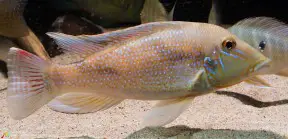
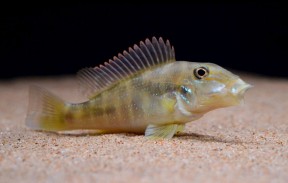
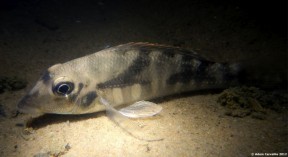
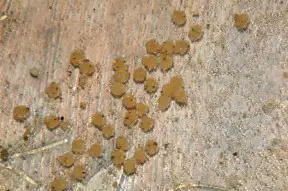
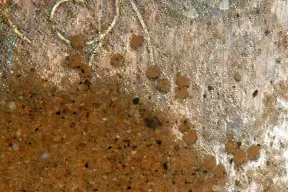
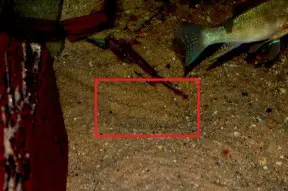
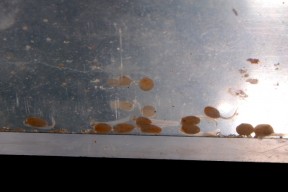
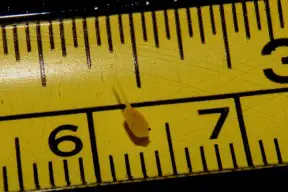
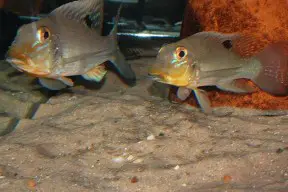
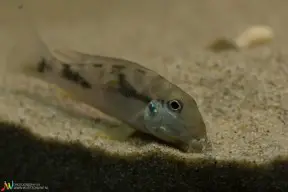
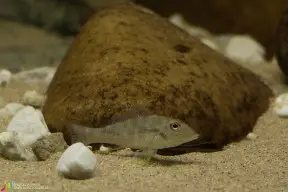
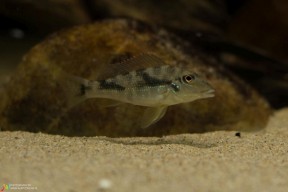
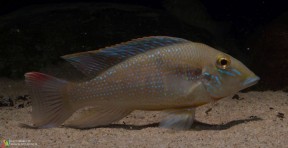
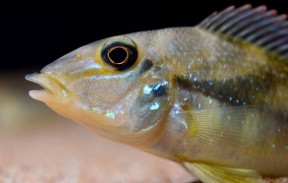
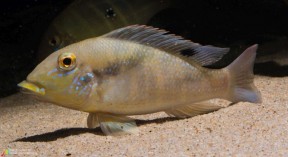
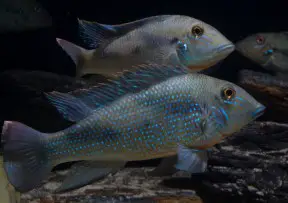
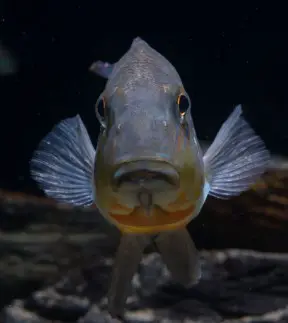
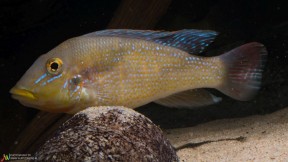
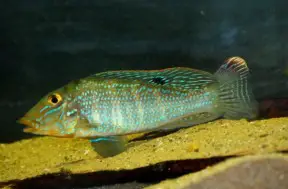
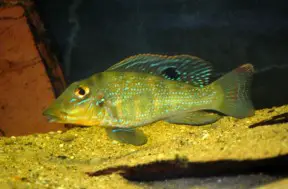
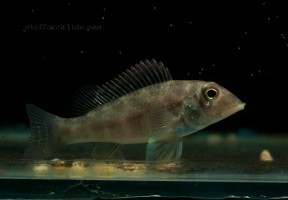
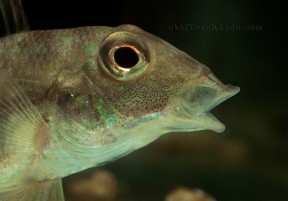
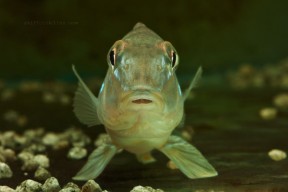
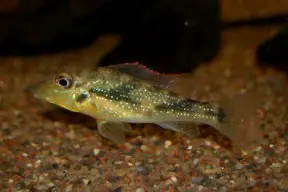
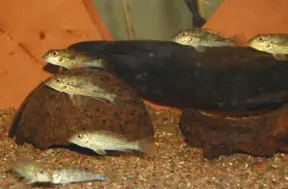
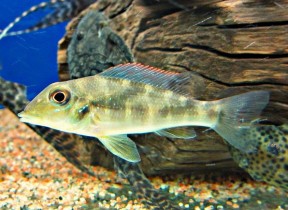
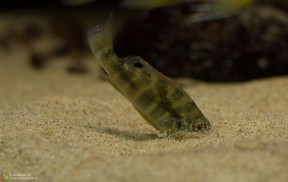

July 25th, 2015 at 5:05 pm
Retroculus, especially the young, spend most of their time sifting sand. While this might not be considered “obligate”, I would say it is their primary method of feeding, borne out by the recorded diet. Like any Cichlid, they adapt quickly to different food availability in the aquarium.
Also, I believe the sensitivity of the species is a bit overstated, though my experience has been raising aquarium bred specimens. These can usually be expected to be hardier and more adaptable.
July 28th, 2015 at 1:34 pm
Thanks for the feedback Darrell. I’ve reworded a couple of sections based on your comments. What do you think?